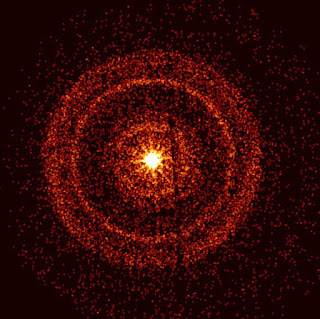For thousands of years we have studied the night sky and wondered if anything else is out there. For thousands of years humans were too busy with their problems on Earth. But then,someone pointed his telescope at the sky & things changed forever. They saw objects that no other person had ever seen: hundreds of stars, mountains on the Moon, satellites of Jupiter. Since then we have found more than 400 planets around other stars, 100 billion stars in our galaxy, hundreds of billions of galaxies beyond our own, even the faint radiation that is the echo of the Big Bang.
But this year an incident that happened on 9th October made a big impact on Earth, this cosmic event was so powerful that, Many telescopes on Earth have captured this cosmic event. So Let's see what was this cosmic event which had such a big impact on the earth.
There are billions of galaxies in our observable universe. In those galaxies, many stars are born and many stars die every second. Stars are fueled by the nuclear fusion of hydrogen to form helium deep in their interiors. The outflow of energy from the central regions of the star provides the pressure necessary to keep the star from collapsing under its own weight, and the energy by which it shines. But like all living beings, stars also die one day.
When the star's core, after some time, stops producing the fuel that was keeping the star alive, the star collapses under its own weight and dies. This event is a violent event.
Recently, on October 9, scientists captured one such event with the help of a telescopes on Earth. This explosion was so violent that it affected the Earth's atmosphere.
The emission came from a gamma-ray burst Called GRB 221009A, the most powerful class of explosions in the universe – that ranks among the most luminous events known.
 Credit: NASA/DOE/Fermi LAT Collaboration
Credit: NASA/DOE/Fermi LAT Collaboration
This sequence constructed from Fermi Large Area Telescope data reveals the sky in gamma rays centered on the location of GRB 221009A. Each frame shows gamma rays with energies greater than 100 million electron volts (MeV), where brighter colors indicate a stronger gamma-ray signal.
The bright rings form as a result of X-rays scattered from otherwise unobservable dust layers within our galaxy that lie in the direction of the burst.
This signal, originating from the direction of the constellation Sagitta, had traveled an estimated 1.9 billion years to reach Earth. Astronomers think it represents the birth cry of a new black hole, one that formed in the heart of a massive star collapsing under its own weight. In these circumstances, a nascent black hole drives powerful jets of particles traveling near the speed of light. The jets pierce through the star, emitting X-rays and gamma rays as they stream into space.
Fermi LAT Collaboration member, said, “This burst is much closer than typical GRBs, which is exciting because it allows us to detect many details that otherwise would be too faint to see,".
It was so strong, that it ionised the upper parts of Earth's atmosphere, changing how radio waves propagate through it. Detectors in India, Germany and UK observed this change.









0 Comments